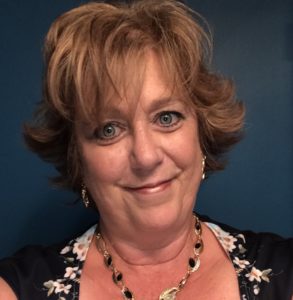

The purpose of a qualified risk management department in healthcare is to assess, monitor, and implement plans and policies in order to decrease their exposure. There are many areas that need to be addressed with patient care and safety taking priority.
Additional areas of risk include financial, staff, regulatory compliance, medical errors and legislation that can impact healthcare organizations.
A risk manager may have experience in the following areas:
● Insurance
● Claims management
● Emergency preparedness
● Clinical research
● Behavioral health
A typical healthcare manager works directly with risk managers. It is the healthcare manager’s role to identify any potential risks to decrease or negate injury to patients, staff, volunteers, visitors and vendors. The healthcare manager who is working hand-in-hand with risk managers can assist to proactively prevent incidents or diminish the damages of an event.
Skilled nursing facilities, home health, hospitals: All healthcare providers face unique challenges and risks. There is not one standard risk assessment that fits like a glove or is the gold standard for all. However, preparing for risks ahead of time can save an organization liability risks, from compromising patient care and help to prevent safety and financial loss, especially for skilled nursing facilities.
A risk management plan should include an evaluation of potential risks and the potential negative implications to the organization. In addition, the risk management plan should be developed, implemented, carefully monitored and adjusted as indicated.
Where I work, we have developed several tools to help our organization and members prepare for and manage risks.
To get ahead of risks that could have negative implications, we help our skilled nursing members prepare for Life Safety Surveys and stay compliant with state and federal emergency preparedness regulations.
When COVID-19 first hit skilled nursing, we quickly responded with a comprehensive pandemic plan. As we learned best practices and proper response to the hazards and risks of the evolving pandemic, we added necessary modifications.
Due to proactively addressing these issues, we were able to decrease facilities’ risk, achieve regulatory compliance and improve the financial stability of the organization through a comprehensive training and testing COVID-19 Pandemic program.
More than COVID-19
In addition, when the recent severe winter crisis caused havoc throughout our country, skilled nursing facilities were faced with the loss of power, heating, burst pipes and other challenges.
One of our skilled nursing clients affected by burst pipes was protected because they had proactively addressed the necessary steps to mitigate disasters. In 2019 and 2020, they worked with my organization to identify hazards and risks; flooding was one of them. We assisted in writing emergency preparedness policies and procedures, consulting, training all of their staff, and testing their emergency operation plans.
During the recent disaster, they immediately contacted us to assist with water and flooding response. They triaged patients and implemented their evacuation plan moving patients, staff, equipment and medications to the upper levels. They were able to shelter-in-place, eliminating the financial waste that comes with evacuation.
Preparing an organization can be a time-consuming and overwhelming task, but by providing their staff with the knowledge, tools and empowerment through skills, policies and procedures, the SNF was prepared. They provided excellent response preventing any further disasters and kept their patients’ and staffs’ safety at the forefront.
These examples are why it’s important to consider a unique unconventional mutual aid system like ours that consists of agreements between healthcare members allowing like-to-like evacuation, transportation, and relocation matching the medical and mobility needs of patients and residents from the stricken facility to the receiving facility; thus not compromising the patient care or patient safety.
To assist and manage risks in advance, our members complete an emergency response agreement providing information on utilities, vendors, emergency contacts, building plan layout and more. The emergency response plan was developed to identify potential risks and the negative implications to the organization. All of these are kept in our database, carefully monitored, and updated as indicated.
Crosswalk for success
A second tool that our healthcare organizations find helpful is a specially developed crosswalk that evaluates organizational hazards and risks, emergency operations plan and components of their emergency preparedness program. Unique healthcare risks assessments, emergency response and mutual aid agreement initiatives protect healthcare members, provide patient safety measures, assist with compliance, decrease liability and keep them in compliance with state and federal mandates.
Risk managers should research, review studies and follow the guidelines of the regulatory bodies.The Department of Health and Human Services, the Centers for Medicare and Medicaid, the Centers for Disease Control, and the American Society of Healthcare Risk Management can help an organization maintain compliance.
Implementing a risk-assessment tool in a risk management program sometimes requires unconventional ways to assess risks. Asking questions may seem a little “old school” with the availability of today’s high-tech information technology, but returning to the basics is sometimes just what the doctor ordered.
Here are some key questions to ask:
● What kind of hazards/or does my organization face?
● What is the probability of the hazard or risk to occur?
● If the risk or hazard were to happen how will my organization be impacted?
● How can we prevent or mitigate the event or hazard from happening?
● What can and should be done to prevent and reduce the impact of the hazard/risk?
● What could be avoided and what could not be avoided?
● What specific risks could cause harm to patient safety?
● How can patient safety risks be mitigated?
● What strategies can our organization initiate for patient-specific risk management?
Risk assessment is an essential tool to complete a comprehensive risk management program. Initiatives can protect your organization, provide patient-safety measures, assist with compliance, decrease liability and maintain compliance with state and federal mandates.
The risk assessment can be an insurance broker and loss-control specialist’s best friend, especially when margins are so tight. You just may be a healthcare risk managers’ knight in shining armor, which is a bit unconventional in and of itself.
Connie Polke is the founder and CEO of Chug Team, a consulting firm training healthcare facilities in emergency preparedness and response.





